The inside story of how John Lennon’s long lost guitar was found in San Diego | San Diego Reader
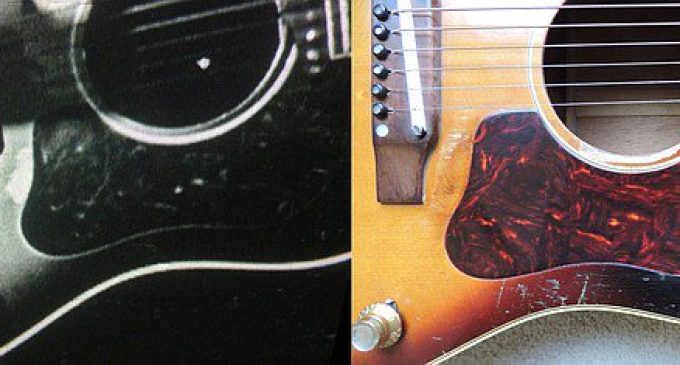
The inside story of how John Lennon’s long lost guitar was found in San Diego
Nobody knew they were handling a treasure worth over 2 million dollars
A decades old mystery solved, but some questions remain
In 2014, John Lennon’s 1962 Gibson J160e guitar, once thought lost, was discovered in San Diego at Marc Intravaia’s Sorrento Valley Sanctuary Art and Music Studio. The following year, it went up for one of the most publicized auctions in Beatles history. However, “Once the story broke on Reuters, there was quite a few awful comments about my friend [John McCaw, the guitar’s owner] from people not knowing the whole story,” Intravaia told the Reader at the time. “He bought it in 1969 from a friend and never knew what he had until he brought it to me last August.”
John McCaw bought the mildly beat-up Gibson acoustic from a friend for $175, in a transaction at the Blue Guitar shop, then located in Old Town. “John joined my Tuesday night Potluck Players instructional jam group in 2009,” says Intravaia, “and would bring along his now vintage Gibson from time to time, and we would take turns strumming this instrument while noting its fantastic action – string height and playability – and pretty tone.”
At one of the guitar workshops in April 2014, McCaw spotted a stack of guitar magazines. “Sitting on top was an edition of Guitar Aficionado with George Harrison’s son Dhani on the cover and given to me by group member Peter. Featured inside was a collection of George’s iconic Beatles guitars and it piqued John’s interest, so he asked if he could borrow it. If the magazine had been underneath another magazine we might not have discovered the historical guitar.”
McCaw noted Harrison’s guitar was only four serial numbers away from his Gibson, and concluded they were probably made on the same day in 1962. “Nothing more was thought or said about this, and he would continue to bring it to the Tuesday night gathering every so often.”
Four months later, in late August 2014, Intravaia says “[John McCaw] came into my office with his old Gibson and had a very serious look on his face. I asked him what he wanted to work on and he said he didn’t want a lesson. He told me he had a hunch and a few questions regarding his guitar and asked if I could help him investigate.”
Research had revealed that John and George bought identical Gibson J160e acoustic/electric guitars in September 1962 at a Liverpool music store called Rushworth’s.
Within a couple of days of the purchases, the Beatles were at London’s EMI studios recording “P.S. I Love You,” followed by “Love Me Do.” Lennon probably used his Gibson on multiple recordings between 1962 and 1963, including their first two albums, Please Please Me and With the Beatles. It’s believed the guitar was used while writing songs such as “She Loves You,” “I Want to Hold Your Hand,” “Please, Please, Me,” “All My Loving,” “From Me to You,” “This Boy,” and more, and the guitar was also part of their touring gear.
“He [McCaw] had read that at some point between September 1962 and December 1963, they swapped instruments for reasons unknown,” says Intravaia, “and that John’s guitar went missing after a series of December 1963 Christmas shows in London at the Astoria Cinema in Finsbury Park.”
“John then brought out the picture of the George Harrison guitar from the magazine and pointed out some obvious wear behind the sound hole. John M’s guitar had those same scratches, but much more pronounced, and he also said that in many pictures he noticed that John had strummed behind the sound hole, and since John had played both guitars for a year he might have put those marks on his guitar.”
Intravaia found video of “I Want To Hold Your Hand” from November 1963. “I propped John’s guitar up to my desk next to the computer and hit play.” He immediately noted several remarkable similarities between the guitar Lennon was playing and McCaw’s guitar.
“The first 28 seconds don’t reveal much, just long shots which aren’t helpful at all. Then at 29 seconds, the camera goes in for a close-up, and that’s when we started seeing similarities. At 30 seconds, I note that the studio lights are showing one particular one inch fishhook scratch at around 11 o’clock on the guitar. We stopped the video and I pointed out that his guitar has that same peculiar scratch.”
“We continued the video and also noted the dark triangle marks above and behind the sound hole, as well as another light colored mark below and behind the sound hole. John pointed out scratches above the soundhole on both his guitar, John Lennon’s guitar, and the magazine photo of George’s guitar. John M.’s instrument had those same marks.”
“I headed into my friend Eve Selis’ next door studio office where she teaches voice and Eve’s husband Tom Gulotta happened to be there. Tom works for David Peck’s music video archive company Reelin’ in the Years, and they have access to tons of high definition videos that aren’t available to the public.”
Gulotta picks up the story in an online post. “He brought me in, and I recognized the YouTube video as coming from the Reelin’ in the Years archive. I also thought the scratches seemed to match, so I took some photos and, the next day at work, I asked RITY president David Peck about the footage and he found the master tape for me.”
“I put it up on my machine and went to the version of ‘This Boy’ from the same TV broadcast [as ‘I Want To Hold Your Hand’] which was not on YouTube. It starts with an extreme closeup on John’s tortoise shell pick guard. I captured a still image and compared it to the picture I had taken the night before. It was a very solid match. No two tortoise shell pick guards are identical, kinda like fingerprints, so that provided hard evidence. I was completely convinced. I sent the still image to Marc and his daughter, Sierra Thernes, and created a side-by-side comparison shot which made it very plain. This was the same pick guard.”
This led to Intravaia contacting the official Beatles gear expert Andy Babiuk on August 22, 2014, in a message reproduced here with permission:
“Hi Andy, this is a shot in the dark, but a friend of mine owns a Gibson 160E that he bought in 1969 from a friend in San Diego. He brought it to me last night after reading an article about George’s guitars in a magazine and noticed the serial numbers are only a few apart. John’s Serial number was 73157. George’s serial number was 73161. After looking at a few videos we couldn’t help but notice the remarkable similarities. Watch the I Want to Hold Your Hand video from 1963. You’ll notice the light reflecting off of some scratches in photo 3 that appear to be the same. The way John strummed behind the bridge and left those deep marks are the same. Might not be the one but it’s been fun speculating.”
The next day, Babiuk replied “Hi Marc, what is the serial number of this guitar. Do you have better photos of the face of the guitar and fingerboard? Thanks!” That led to a phone call that ended with both men feeling elated, but cautious.
“He [Andy Babiuk] made it very clear that this might be a forgery and that he needed better pictures of the wood grain, because, in his words, ‘the wood grain is the DNA of the guitar,’” says Intravaia. With Babiuk holding all the original records and receipts for Lennon and Harrison’s Rushworth’s guitar purchases, his would be the definitive word on whether this was or wasn’t John Lennon’s long-lost Gibson.
“John brought the guitar over to my house and my daughter Sierra started shooting. We searched for the best light, and our neighbors must have wondered why we were laying this old scratched up guitar on a towel in the driveway while fussing over camera angles. Sierra took over a hundred pictures of the instrument, and I sent the best pictures to Andy and waited for a response.”
Intravaia was delighted when “I received a call from Andy confirming that it was John Lennon’s guitar.”
Julien’s Auction House in Beverly Hills agreed to auction the Gibson over the first weekend of November 2015. The company’s owner, Darren Julien, called it “one of biggest finds in music history,” stating in the press release that its sale may exceed the $965,000 earned in 2013 for an electric guitar owned by Bob Dylan.
Before the auction, the guitar went on its own tour of sorts, appearing that summer at the Grammy Awards Beatlemania Exhibition at LBJ Library in Austin TX from mid-through-late June, and at the Grammy Museum in LA, where it remained on display from July 2 through September 7.
In advance of the impending auction, a few locals had the opportunity to play the Lennon guitar: Marc DeCerbo (Four Eyes), Christopher Leyva (Falling Doves), and Bart Mendoza (the Shambles). “I can honestly say it was one of my life’s high points,” says Mendoza. After strumming a Lennon/McCartney tune, “Bad to Me,” he says, “What brought the whole thing sort of full circle for me was that I played one of my own songs on it, ‘You Still Take My Breath Away.’ It’s been almost five decades since the Beatles influence hit me, and to be able to play one of my own tunes on one of the instruments that changed the world, it’s an unbelievable feeling that I will always carry with me.”
Leyva recalls of the distinctive wear marks, “I saw every scar, every cut, the frustration and his heavy hand strumming. Almost like a brute learning to play the guitar, just like I used to. I could almost see John playing with Paul, swapping it back and forth, being played upside down. Even Ringo giving it a crack, trying to jam to Ray Charles on the radio.”
Allowed to record a few original bars on his cell phone, Leyva says, “It really did something for me, man. I connected to the 18-year-old version of myself, learning the guitar and writing the first song. And, just when I got started, the man said, ‘Your time’s up.’”
Intravaia says a few other lucky locals got to handle it as well. “Before the guitar was sent to the Grammy Museum’s curators on June 1, we brought it to my wife’s 4th grade classroom at Carmel Del Mar Elementary to share. We felt it was important for the children to have a personal experience with the guitar and explained that, in the future, people will only be able to see it in a museum.”
In addition, “John brought the guitar to Berkley Sound recording studio, where my group Berkley Hart Selis Twang recorded our four-part harmony version of ‘Norwegian Wood’ with it.”
The guitar sold at auction for 2.41 million dollars.
Source: The inside story of how John Lennon’s longlost guitar was found in San Diego | San Diego Reader

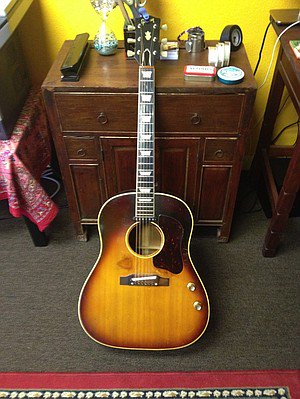
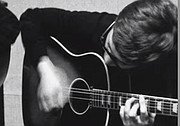
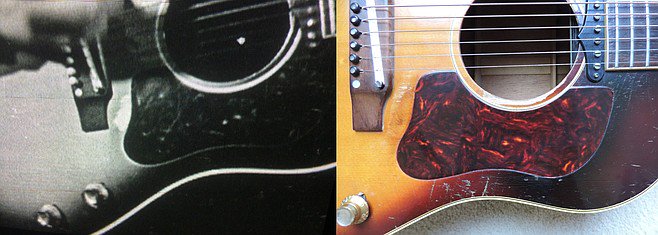
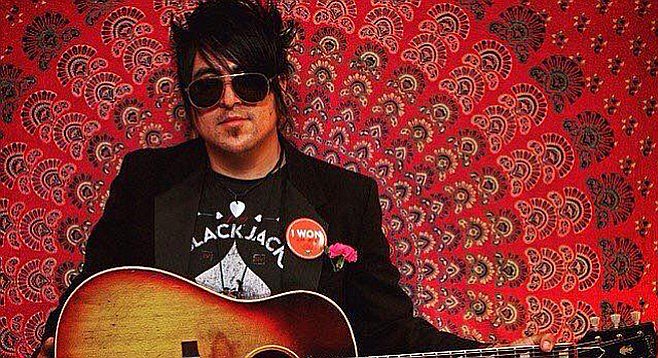
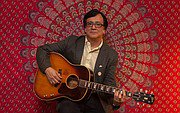


There are no comments at the moment, do you want to add one?
Write a comment